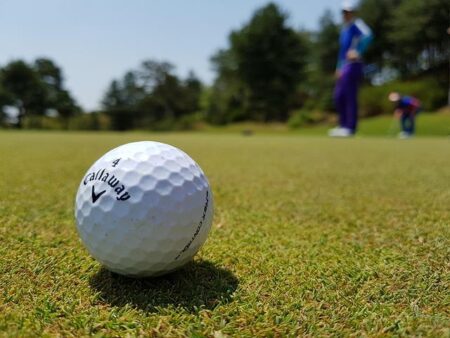In the world of golf, the long-held mantra has been clear: a straight-back putting stroke is the key to sinking more putts. However, recent analysis and insights from leading professionals are challenging this conventional wisdom. The concept of a putting arc-where the putter follows a slight curved path rather than a purely linear one-is gaining traction as a more natural and effective technique. This article delves into the origins of the straight-back dogma, explores the science behind the putting arc, and examines why embracing a subtle arc may ultimately improve a golfer’s consistency and confidence on the green.
The Science Behind the Putting Arc and Its Impact on Accuracy
Contrary to the popular belief that a straight-back-and-straight-through stroke guarantees precision, the natural biomechanics of the human body often favor a slight arc during putting. This arc is not just a stylistic choice but a reflection of how the wrists, elbows, and shoulders move most efficiently. When putters swing strictly straight, they may inadvertently introduce tension and inconsistencies into their stroke. Research in sports science shows that a subtle arc aligns the putter’s path more naturally with the body’s comfortable range of motion, promoting smoother acceleration and better control over the clubface angle.
- Wrist hinge and arm rotation: These contribute to the creation of the natural arc, reducing forced muscular effort.
- Improved muscle memory: Allows the golfer to replicate the stroke more consistently under pressure.
- Putter face alignment: Tends to remain more square through impact within an arced stroke, enhancing accuracy.
| Stroke Type | Muscle Engagement | Impact on Accuracy |
|---|---|---|
| Straight Back | High tension in wrists | Variable due to forced mechanics |
| Natural Arc | Fluid arm and wrist motion | Consistent alignment and control |
How Adapting Your Stroke Can Improve Consistency on the Green
Consistency on the green often hinges on subtle adjustments rather than radical swings in your technique. By tailoring your stroke to embrace a slight arc-rather than forcing a strictly straight-back, straight-through motion-you align more naturally with the contours of your putting path. This approach can reduce the tension in your wrists and forearms, creating a smoother, more fluid motion that promotes better ball roll and minimizes unwanted twists at impact.
Key benefits of adapting your stroke include:
- Improved alignment: An arced stroke aligns with the natural path of many putts, enhancing directional control.
- Enhanced feel: Flexibility in stroke style connects you more intuitively to the green’s slope and speed.
- Reduced inconsistency: Less mechanical tension leads to repeatable strokes under pressure.
| Stroke Type | Typical Path | Common Benefit |
|---|---|---|
| Straight Back & Through | Straight line | Predictable contact |
| Slight Arc | Smooth curve | Natural alignment with putt |
| Inside-Out Arc | Curved outward | Better for breaking putts |
Future Outlook
In debunking the long-held belief that a straight-back putting stroke is the gold standard, recent insights reveal that what works best on the greens may vary from player to player. The putting arc myth underscores the complexity of golf’s most delicate skill, reminding enthusiasts and professionals alike that individuality often trumps convention. As the game continues to evolve, so too does our understanding of the mechanics behind a successful putt-proving once again that in golf, there’s rarely a one-size-fits-all solution.








